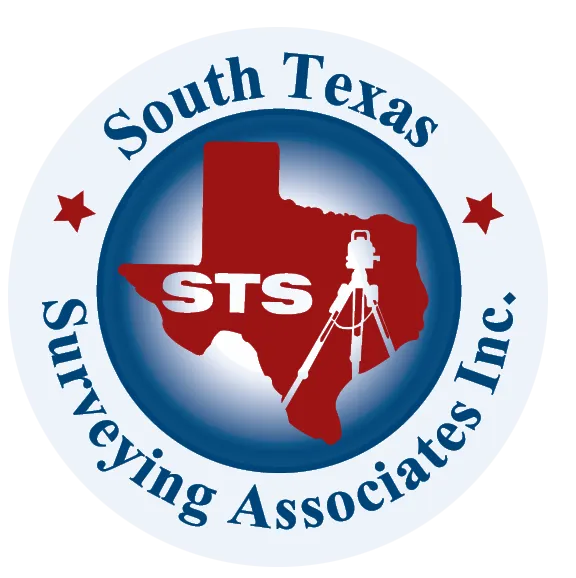Surveying Texas Since 1980 Family Owned, Customer Devoted | Firm #10045400 | 281-556-6918
See Our Latest Blogs

The Future of 3D Mapping in Texas Land Surveys
“In Texas, where diverse landscapes and rapid development present unique challenges, 3D mapping offers significant benefits for land use planning, infrastructure development, and environmental management.” - Chris Evans
The Future of 3D Mapping in
Texas Land Surveys
The field of land surveying is constantly evolving, with new technologies enhancing the accuracy, efficiency, and scope of surveying practices. Among these advancements, 3D mapping stands out as a revolutionary tool that is transforming how land surveys are conducted. In Texas, where diverse landscapes and rapid development present unique challenges, 3D mapping offers significant benefits for land use planning, infrastructure development, and environmental management.
Understanding 3D Mapping
3D mapping, or three-dimensional mapping, involves creating detailed, three-dimensional representations of the land. This technique uses data from various sources, including LiDAR (Light Detection and Ranging), photogrammetry, and GIS (Geographic Information Systems), to generate accurate and comprehensive models of the terrain. These models provide a deeper understanding of the spatial relationships and physical characteristics of the surveyed area.
Enhanced Accuracy and Detail
One of the primary advantages of 3D mapping is its ability to capture highly accurate and detailed data. Traditional surveying methods provide two-dimensional data, which can sometimes miss critical details about the terrain. In contrast, 3D mapping offers a complete view, capturing elevation changes, structures, vegetation, and other features with precision. This enhanced accuracy is crucial for various applications, including construction, urban planning, and environmental monitoring.
Applications in Infrastructure Development
3D mapping is particularly beneficial for infrastructure development in Texas. Whether it’s for planning new highways, bridges, or utility networks, accurate 3D models help engineers and planners visualize the terrain and design projects that fit seamlessly into the landscape. These models enable the identification of potential issues, such as unstable ground or flood-prone areas, early in the planning process, reducing risks and costs associated with construction.
Supporting Urban Planning
Texas cities are experiencing rapid growth, making efficient urban planning essential. 3D mapping provides urban planners with the tools to design cities that are both functional and aesthetically pleasing. Detailed 3D models help visualize building layouts, assess the impact of new developments on existing structures, and plan for sustainable growth. This technology also supports the creation of green spaces and the integration of smart city initiatives.
Environmental and Conservation Efforts
Protecting Texas’s diverse ecosystems requires accurate and comprehensive data on the natural landscape. 3D mapping aids in environmental and conservation efforts by providing detailed information on topography, vegetation, and water bodies. This data is essential for monitoring environmental changes, planning conservation projects, and assessing the impact of human activities on natural habitats. By offering a precise view of the terrain, 3D mapping supports efforts to preserve Texas’s natural beauty.
Disaster Management and Mitigation
Texas is prone to various natural disasters, including hurricanes, floods, and wildfires. 3D mapping plays a crucial role in disaster management and mitigation by providing detailed terrain models that help predict the impact of these events. For instance, 3D maps can model flood zones, allowing for better planning and response strategies. This technology also supports the assessment of damage and the planning of recovery efforts, ensuring communities are better prepared for future events.
Innovations in Surveying Technology
The future of 3D mapping in Texas land surveys is closely tied to ongoing innovations in surveying technology. Advances in drone technology, for example, have made it easier and more cost-effective to collect high-resolution data over large areas. Similarly, improvements in LiDAR and photogrammetry techniques continue to enhance the accuracy and detail of 3D models. These innovations are driving the adoption of 3D mapping across various sectors, from construction to environmental management.
Challenges and Considerations
While 3D mapping offers numerous benefits, it also presents certain challenges. The technology requires significant computational power and expertise to process and analyze the data. Additionally, integrating 3D mapping into existing workflows may require changes in how projects are planned and executed. Despite these challenges, the benefits of 3D mapping far outweigh the drawbacks, making it a valuable tool for modern land surveying.
3D mapping is set to revolutionize land surveying in Texas, offering enhanced accuracy, detail, and applications across various fields. From infrastructure development and urban planning to environmental conservation and disaster management, the benefits of 3D mapping are extensive. South Texas Surveying is at the forefront of adopting this advanced technology, providing comprehensive and precise surveying services that support the future of Texas’s development. Contact us to learn how our 3D mapping solutions can benefit your projects and help shape a sustainable and resilient future for Texas.
Delivering Land Surveys with Attention to Detail
George Owens
Commercial Broker

I have worked with many surveying companies, but South Texas Surveying stands out for their exceptional professionalism, attention to detail, and commitment to their clients.
Kim Wexler
Project Manager

Their accurate and thorough surveys make my job a lot easier, their ability to communicate effectively with all parties involved is commendable. I highly recommend South Texas Surveying.
James Cart
Homeowner

As a new homeowner, I was thoroughly impressed with the professional service provided by South Texas Surveying. I high recommend their services to any one buying a home in Houston.
Contact Us
Email: [email protected]
Office Address: 11281 Richmond Ave
BLDG J, Suite 101,
Houston, TX 77082
Office Hours: Mon – Fri 8:00am – 5:00pm
Office Phone Number: 281-556-6918
11281 Richmond Ave
BLDG J, Suite 101,
Houston, TX 77082
Firm Number: 10045400
Resources
© Copyright 2024 South Texas Surveying Associates
